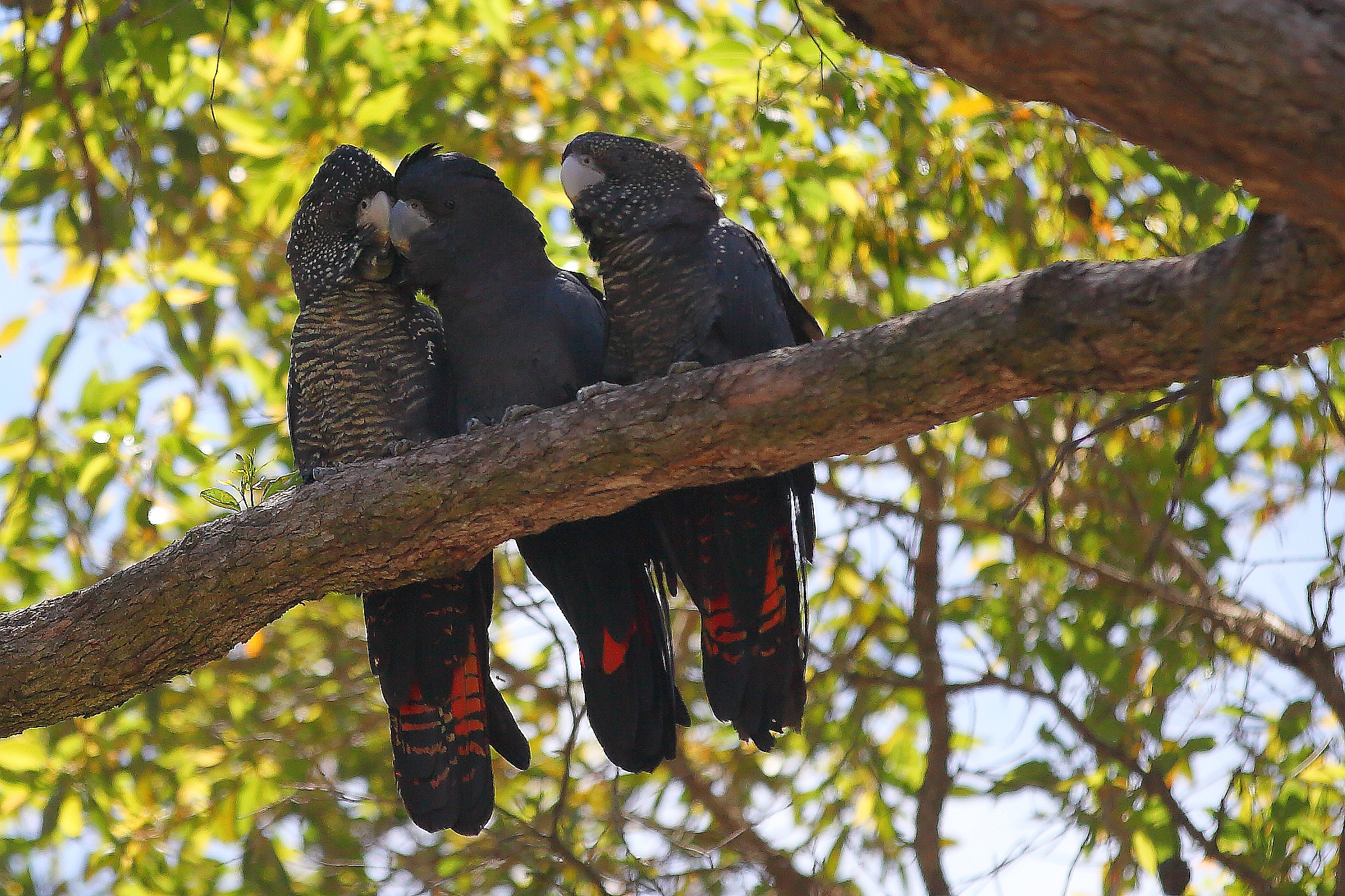In the crisp, still, morning air, not a sound breaks the silence. If you close your eyes, you could almost be anywhere in the world. But when the silence is shattered by a raucous screech, followed by an echoed chorus as the flock takes flight for its morning forage, you know – beyond a shadow of a doubt – that you’re in Western Australia.
The cry of the black cockatoo is so synonymous with the landscape of southwest Western Australia, it’s easy to forget how special they are. Be it Carnaby’s, Baudin’s or forest red-tailed black cockatoos, flocks of these beautiful birds silhouetted against the sky are a familiar sight for everyone in southwest WA.

Red-tailed black cockatoos |Getty Images
Unfortunately, these beloved animals, so ingrained in the culture and environment of our country, may not be here for much longer.
The three species of WA black cockatoo are currently listed as vulnerable, endangered or critically endangered. And with populations declining rapidly, some have predicted they could soon go extinct.
Beautiful birds and beautiful souls
Kloe Balsley, volunteer and site coordinator at Kaarakin Black Cockatoo Conservation Centre, is one of a dedicated group of people helping to save these birds.
“I was volunteering at Darling Range Wildlife Shelter, and another volunteer mentioned Kaarakin,” says Kloe.
“So I thought I’d attend an induction day, and from there, I fell in love with everything about them.”
Black cockatoos are fun, playful and deeply empathetic creatures who form strong emotional bonds with those around them. This makes it even more tragic that so many of them are being killed.
Kloe is part of a small team of co-workers, and some very enthusiastic volunteers, who are doing everything they can to prevent the extinction of WA’s black cockatoo, but they face an uphill battle.
A flock of problems
“Habitat loss and fragmentation is by far the biggest threat to black cockatoos in WA … everything else is linked to habitat loss,” says Kloe.
As their native habitats are being destroyed, black cockatoos are having to travel further and further into other areas looking for food. And it’s placing them in a lot of danger.
“We get misplaced young birds that have been shot, often by orchard owners.”
“Carnaby’s also come to us with what we call CHiPS.”
Cockatoo hindlimb paralysis syndrome (CHiPS) is believed to be connected to pesticides sprayed on canola crops, which cockatoos eat. Carnaby’s Black Cockatoo | Jean and Fred Hort via flickr
Carnaby’s Black Cockatoo | Jean and Fred Hort via flickr
“We also get a lot of birds that have been attacked by ravens. They chase them and pluck out their tail feathers, immobilising them and often killing them,” says Kloe.
“Most can be rehabilitated, but unfortunately it’s a long process.”
“But the main reason they come to us is because of vehicle strikes. They will often feed from spilled grain, making them more vulnerable to car strikes.”
As if all that weren’t enough, black cockatoos also face a severe lack of suitable nesting habitat.
Black cockatoos only nest in tree hollows that take hundreds of years to develop. So as we continue progressively clearing WA forests for housing, farming and mining, we’re losing nesting habitat that cannot be replaced within our lifetimes.
The few hollows that do survive clearing are hotly contested by other species.
“Pest species such as rainbow lorikeets and feral bees and agricultural pests like galahs and corellas push them out to take their hollows. They’re big birds, but they’re gentle giants,” says Kloe.
All that might be lost
All three black cockatoo species have deep cultural significance to Noongar people.
Black cockatoos are common baronga (Noongar spiritual totems). Their feathers are worn as a sign of leadership. Furthermore, Carnaby’s black cockatoos are viewed as heralds of rain, with messages that connect Aboriginal people to their ancestors.
Baudin’s Black Cockatoo | The Bird Hide via YouTube
With the loss of black cockatoos, we stand to lose more than just a cultural icon. They also play important roles in maintaining ecosystem health.
Black cockatoos maintain forest health by foraging for insects that would otherwise become damaging pests. They also help to disperse seeds across the landscape, ensuring that these ecosystems have a future in new growth and seedling establishment.
Not over yet
But the Carnaby’s, Baudin’s and forest red-tailed black cockatoos needn’t follow the likes of the thylacine and lesser bilby. We can still act.
Volunteer, plant cockatoo-friendly trees, write a letter to your MP, join the Great Cocky Count or even just watch the recent documentary Black Cockatoo Crisis. It all helps!
Take yourself back to that crisp, quiet morning. A cool breeze against your skin and cold air in your lungs. As you listen carefully to that still morning, do you want to hear the cry that tells you, ‘You’re home, you’re in WA’ or do we want to hear … silence?









